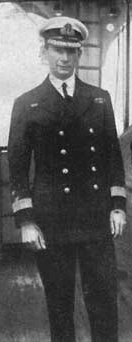|
Battle Of Heligoland (other)
Battle of Heligoland, Battle of Helgoland, or Battle of Heligoland Bight may refer to *Battle of Heligoland (1849), a First Schleswig War naval battle *Battle of Heligoland (1864), a Second Schleswig War naval battle *Battle of Heligoland Bight (1914), a World War I naval battle *Second Battle of Heligoland Bight, a 1917 World War I naval battle *Battle of the Heligoland Bight (1939), a World War II air battle {{disambiguation ... [...More Info...] [...Related Items...] OR: [Wikipedia] [Google] [Baidu] |
Battle Of Heligoland (1849)
The first Battle of Heligoland took place on 4 June 1849 during the First Schleswig War and pitted the fledgling ''Reichsflotte'' (Imperial Fleet) against the Royal Danish Navy, which had blocked German naval trade in North Sea and Baltic Sea since early 1848. The outcome was inconclusive, with no casualties, and the blockade went on. It remained the only battle of the German fleet.''die erste und einzige Seefahrt unter der Schwarz-rot-goldnen Flagge'' – Georg Wislicenus, ''Deutschlands Seemacht'/ref> Battle At the outbreak of the First Schleswig War, the Danes instituted a blockade, stopping all German trade in the North Sea and the Baltic Sea. This prompted the German parliament at Frankfurt to form a new all-German navy. The Germans had to build a fleet from scratch, buying ships abroad and converting them, and hiring foreign officers (British, Belgian) to lead native veteran merchant mariners. After about a year of preparation, on 4 June, German Admiral Karl Rudolf ... [...More Info...] [...Related Items...] OR: [Wikipedia] [Google] [Baidu] |
Battle Of Heligoland (1864)
The Battle of Heligoland (or Helgoland) was fought on 9 May 1864, during the Second Schleswig War, between a Danish squadron led by Commodore Edouard Suenson and a joint Austro-Prussian squadron commanded by the Austrian Commodore Wilhelm von Tegetthoff. The action came about as a result of the Danish blockade of German ports in the North Sea; the Austrians had sent two steam frigates, and , to reinforce the small Prussian Navy to help break the blockade. After arriving in the North Sea, Tegetthoff joined a Prussian aviso and a pair of gunboats. To oppose him, Suenson had available the steam frigates and and the corvette . On the morning of 9 May, the two squadrons encountered each other off the island of Heligoland, then controlled by neutral Great Britain. Tegetthoff attacked with his two frigates while the slower Prussian vessels lagged behind, unable to effectively engage the Danish warships. Tegetthoff's flagship, ''Schwarzenberg'', bore the brunt of the Danish gunfir ... [...More Info...] [...Related Items...] OR: [Wikipedia] [Google] [Baidu] |
Battle Of Heligoland Bight (1914)
The Battle of Heligoland Bight was the first Anglo-German naval battle of the First World War, fought on 28 August 1914, between ships of the United Kingdom and Germany. The battle took place in the south-eastern North Sea, when the British attacked German patrols off the north-west German coast. The German High Seas Fleet was in harbour on the north German coast while the British Grand Fleet was out in the northern North Sea. Both sides engaged in long-distance sorties with cruisers and battlecruisers, with close reconnaissance of the area of sea near the German coast—the Heligoland Bight—by destroyer. The British devised a plan to ambush German destroyers on their daily patrols. A British flotilla of 31 destroyers and two cruisers under Commodore Reginald Tyrwhitt, with submarines commanded by Commodore Roger Keyes, was dispatched. They were supported at longer range by an additional six light cruisers commanded by William Goodenough and five battlecruisers commanded b ... [...More Info...] [...Related Items...] OR: [Wikipedia] [Google] [Baidu] |
Second Battle Of Heligoland Bight
The Second Battle of Heligoland Bight, also the Action in the Helgoland Bight and the , was an inconclusive naval engagement fought between British and German squadrons on 17 November 1917 during the First World War. Background British minelaying The British used sea mining defensively to protect sea lanes and trade routes and offensively to impede the transit of German submarines and surface ships in the North Sea, the danger of which was illustrated on 17 October 1917 by the sortie of the German ''Brummer''-class cruisers and (the action off Lerwick) against the Scandinavian Convoy. (During 1917, six U-boats were sunk by British mines and in two years, the German minesweeping counter-effort suffered the loss about 28 destroyers and 70 minesweepers and other ships.) The Germans had been forced into minesweeping up to into the Heligoland Bight and in the southern Baltic Sea, covered by light cruisers and destroyers, with occasional distant support by battleships. After ... [...More Info...] [...Related Items...] OR: [Wikipedia] [Google] [Baidu] |


.png)